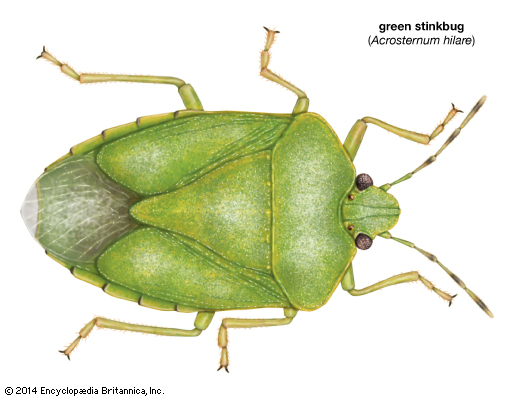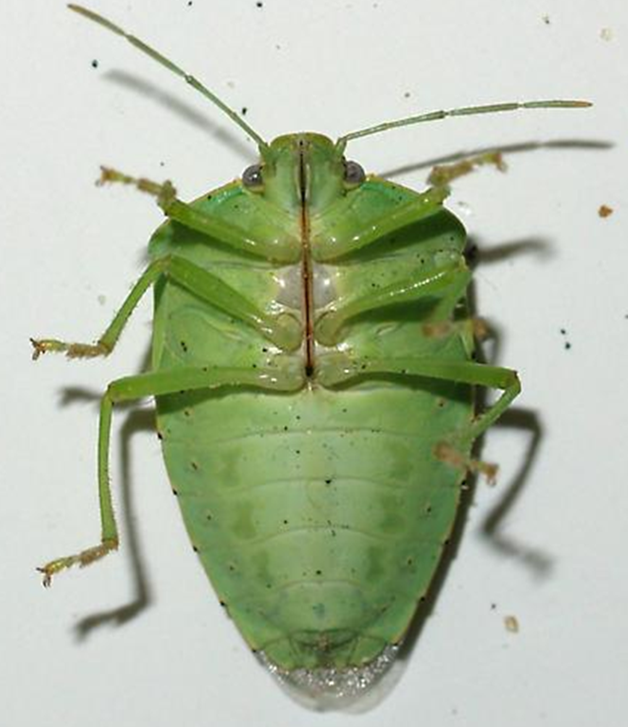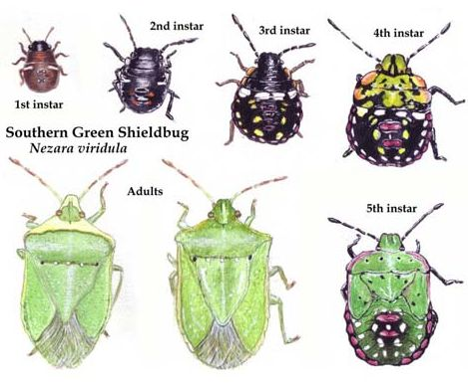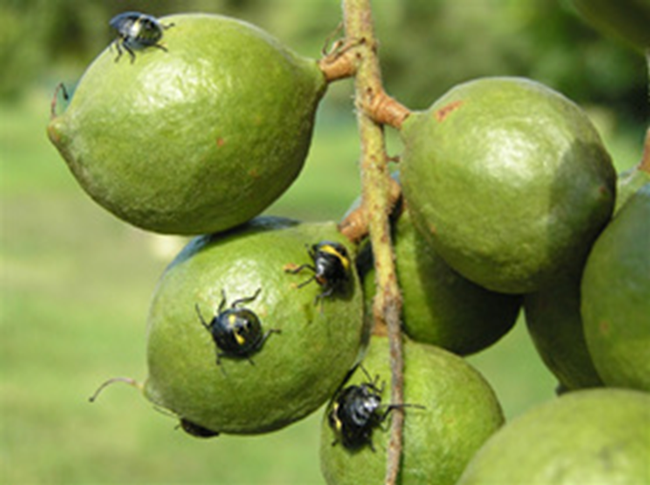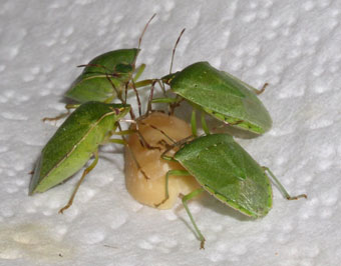
Green Stink Bugs in Macadamias
The green stink bug is the dominant species found in fruit and nut trees; the others are found primarily in vegetables. Stink bug infestations originate when adults fly in from weedy areas. Damage is often limited to the edges of fields near these areas, but in years with a lot of spring rain and late weed growth, stink bugs may be numerous and damage more widespread. The southern green stink bug has piercing-sucking mouthparts. The mouth consists of a long beak-like structure called the rostrum. Salivary fluid is pumped down the salivary duct and liquefied food is pumped up the food canal.
Life Cycle
The southern green stink bug can complete its life cycle in 65 to 70 days. Females can lay eggs 3-4 weeks after becoming adults. A female southern green stink bug could lay as many as 260 eggs over her life span. The eggs are drum-shaped with circular "lids" are laid ire deposited on the undersides of leaves. The nymphs, nearly round & often brightly colored, remain close together at first but scatter as they grow. They pass through four or five molts, gradually developing wings & adult coloration.
Damage
Overwinters as an adult, & hides in the bark of trees, leaf litter, or other locations to obtain protection from the weather. As spring temperatures begin to warm, the southern green stink bug moves out of the winter cover to feed. Is normally determined after nuts are harvested & processed, which may be many months after damage occurred in the field. Damage occurs to the nut when the stink bug places its stylet-like mouthparts on the nut husk & secretes saliva containing a suite of digestive enzymes that softens the husk, allowing it to insert its mouthparts through the husk and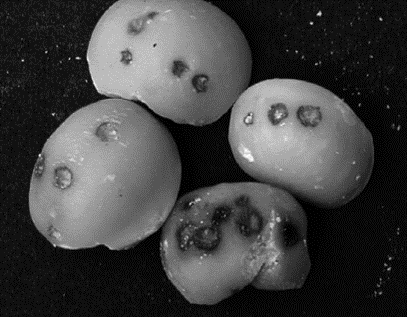
A major drawback in management is the lack of an effective monitoring technique (Jones 2002, Les-key & Hogmire 2005), an issue we address in many studies. Southern green stinkbug cannot survive on macadamia nuts alone and require a primary food plant, or host. Stinkbugs reproduce and develop on the weeds and feed on macadamia when their primary food plants become unavailable.
Growers who continually experience damage should monitor weed hosts surrounding the crop field. It may be possible to utilize trap-borders of preferred hosts such as Crotalaria (rattlepod) to attract and hold stink bug populations. Stink bugs will usually remain on the plants where parasites can readily find them. It is important that these borders not be allowed to dry before control occurs. California used Trissolcus basalis in an effort to control its southern green stink bug population.
Insecticidal applications are usually not required, however sprays may be needed if stink bug populations are high. This pest can be chemically controlled by the use of carbamates & organophosphate compounds. However, because most of these compounds persist on the treated plant for a relatively short period, the crop is vulnerable to re-infestation from nearby areas.

